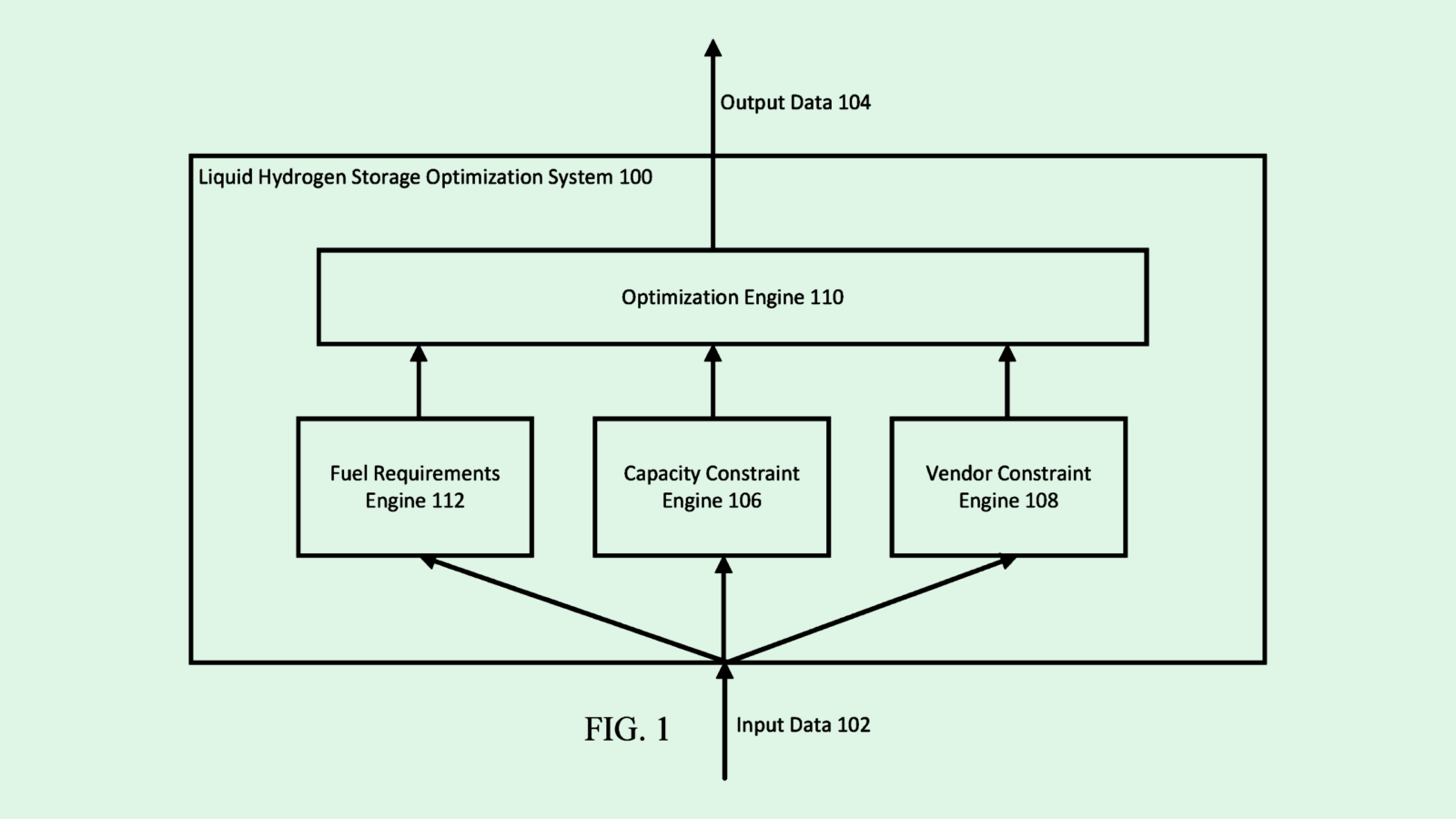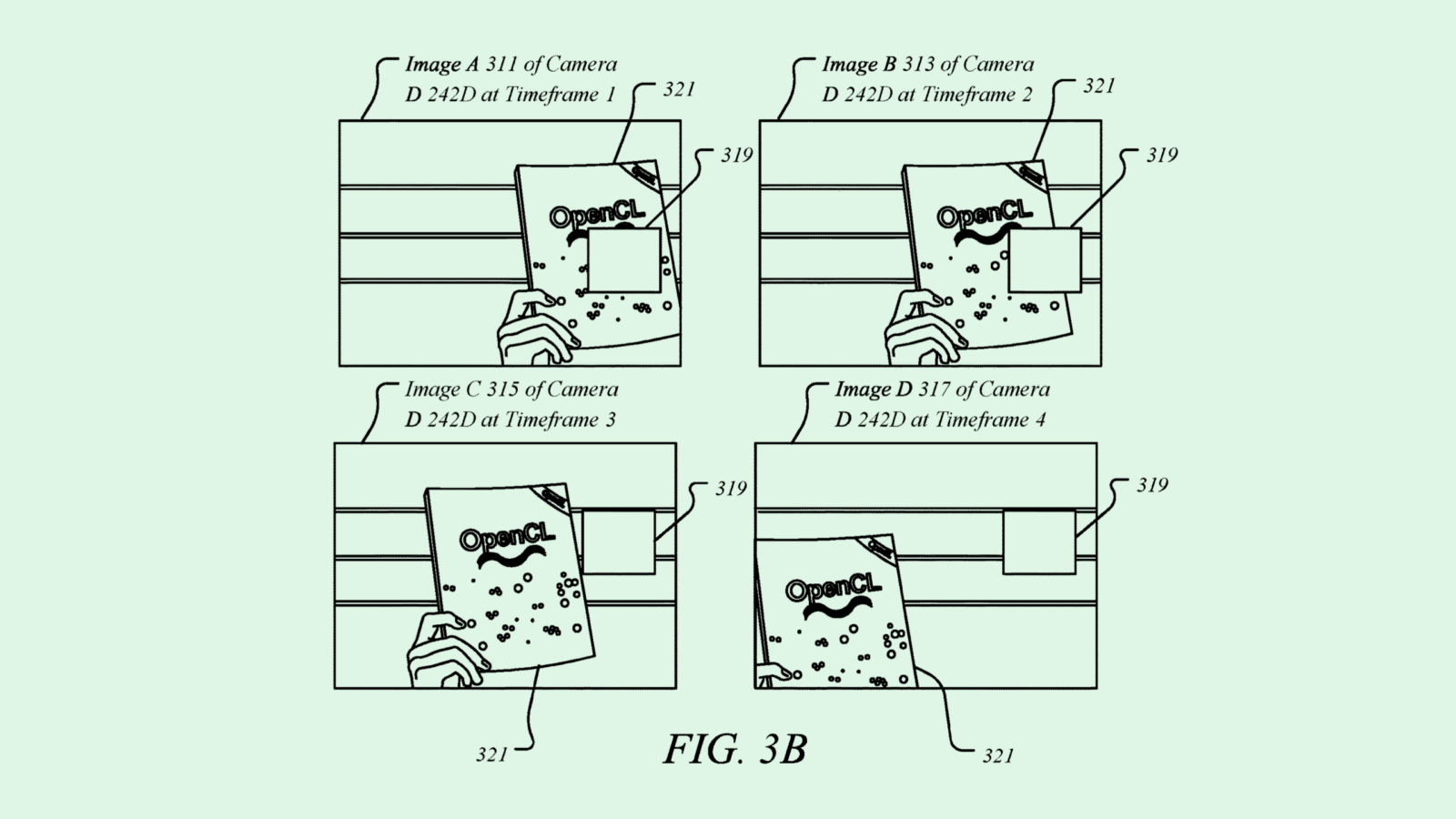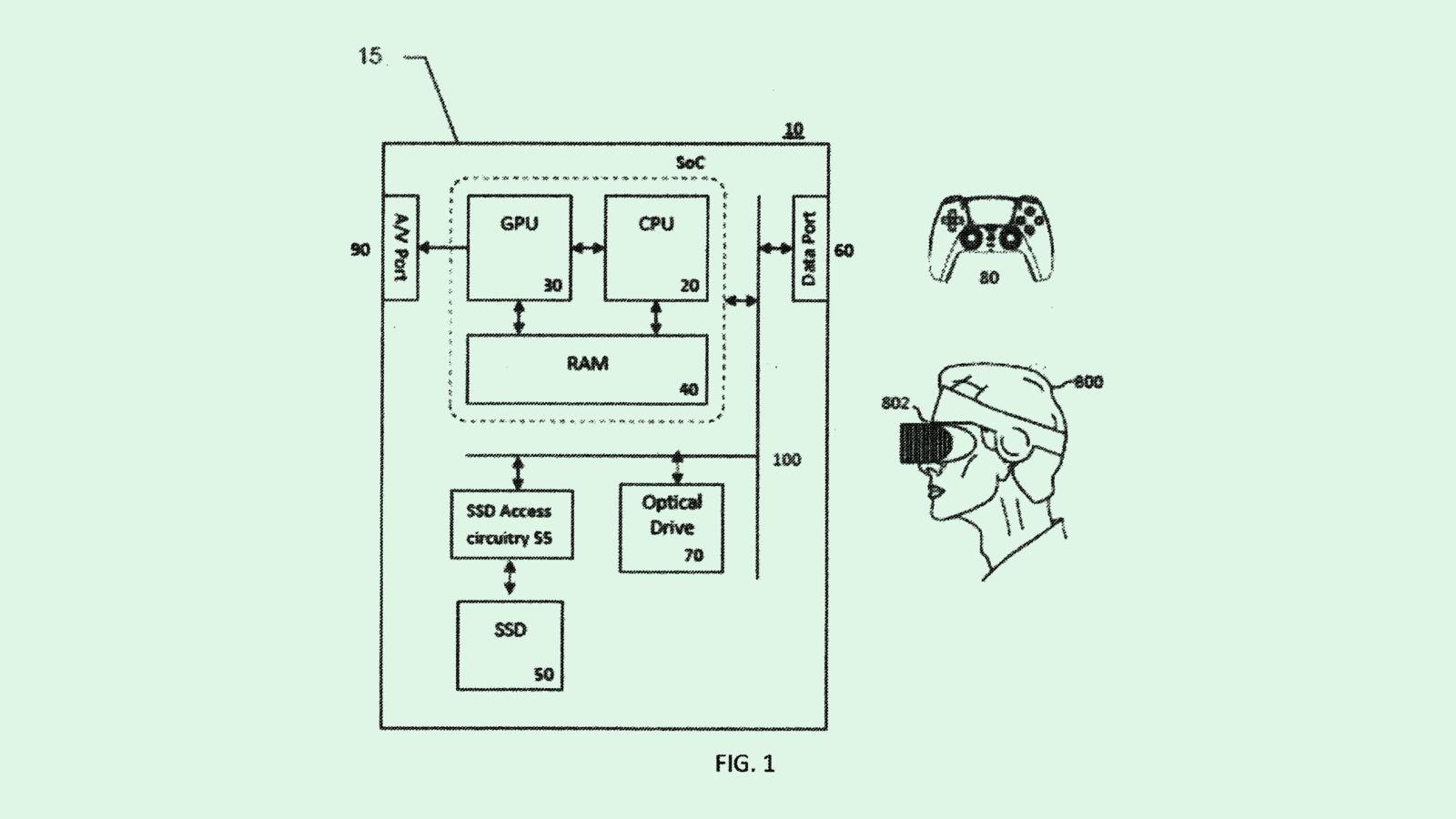Happy Thursday and welcome to Patent Drop!
Today, a Google patent to use hydrogen to power data centers could signal that Big Tech is looking for creative solutions to AI’s power demand. Plus: Intel makes autonomous sensors redundant, and Sony uses AI to amp up gameplay.
Let’s go.
Google Fuels Up Data Centers
As its AI ambitions reach a fever pitch, Google wants to make sure its data centers aren’t heating up the earth.
The company filed a patent application for “hydrogen fueling and storage optimization” of fuel cells in data centers. Google’s method essentially rations how much hydrogen its data centers can rely on.
“Utilizing greener energy sources is desirable for consuming such large amounts of power,” Google said in the filing. “However, transitioning away from diesel fuels to greener fuels that are less energy dense, such as liquid hydrogen, can create new problems for data centers.”
Google’s model takes into account several factors in rationing liquid hydrogen fuel, including how fast the data center consumes hydrogen, physical storage constraints of the data center, and logistical refueling constraints. It also takes into account vendor information — such as the time it takes for a vendor to respond and refuel — and cost per tank of hydrogen. Additionally, the system may monitor the amount of hydrogen a facility has available at any given time.
All of this information is used to calculate and adjust the amount of hydrogen fuel a data center can use at any given time. In the event of an emergency, Google’s model takes into account the power needs of the data center and increases the hydrogen fueling it to prevent sudden power outages.

As AI demand continues to skyrocket, so does the power demand on data centers. These facilities currently eat up between 1% and 2% of power globally — and that could double by 2030.
And as Google forges on with its crusade for AI dominance, its energy bill feels the effects. The company revealed in July in its annual environmental report that its emissions jumped 50% over the past five years, noting that data centers and supply chain emissions are the primary reason. It said reaching net zero by 2030 is “extremely ambitious,” and that the environmental impact of AI is “complex and difficult to predict.”
“Google knows that data centers are a huge component of [its energy footprint] and are only scheduled to grow, and they’re looking for creative solutions,” said Dan Stein, founder and executive director of Giving Green.
Lots of companies are searching for solutions to the data center problem. Intel, Microsoft, and Google have all sought patents aimed at tempering data centers’ energy usage. Nvidia filed a patent application to use “natural gas or bio-gas,” such as hydrogen, to cool down data centers, and Microsoft has researched cryogenic energy as a solution.
Hydrogen, however, may not be the silver bullet, said Stein. Though hydrogen is an abundant natural gas, making it useful is quite energy-intensive, he said, and it is quite difficult to transport.
Plus, he said, not all hydrogen is created equal: Blue hydrogen, which is produced from natural gas during carbon capture, still emits carbon dioxide; green hydrogen, which is produced using renewable resources, is zero-carbon (though more expensive).
“At this point, most serious energy modelers do not think that hydrogen is ever going to be practically used for electricity generation because of all of these complications,” said Stein.
Intel’s ‘Land Grab’
Intel wants to make sure there’s no smudge on the lens.
The company filed a patent application for real-time detection and correction of “compromised sensors in autonomous machines.” Intel’s tech relies on deep learning to determine whether or not certain sensors can reliably collect data.
Though conventional techniques collect data from multiple sources to offer “some redundancy to guarantee the accuracy,” Intel noted that “these conventional techniques are severely limited in that they are incapable of dealing with or getting around those sensors that provide low quality or misleading data.”
To overcome this, this system uses deep learning — neural networks extract higher-level insights from data to detect and process any images from sensors that may be unclear. When it picks up that an image is unclear, it tracks down which sensor the image may have come from, and course-corrects by switching to an alternative sensor. This way, the machine can continue operating without issue.
For example, if a robot working on a factory floor relies on LIDAR sensors to get around, and one of those sensors is occluded by a technical malfunction, a crack, or even debris on the lens, the system would quickly detect the issue and switch to a different sensor so work is unimpeded.

Though Intel’s tech could help make sensors more reliable, its method of doing so is “kind of an obvious thing to do,” said Rhonda Dibachi, CEO at Manufacturing-as-a-Service company HeyScottie. At its core, this patent creates backup sensors in the event of a failure — something that’s a must when making machines, robots, and vehicles safely autonomous.
So why go for something so obvious? “It’s a land grab,” said Dibachi. “In the semiconductor manufacturing business, they use patents as a defensive strategy. Because semiconductor manufacturers, particularly those in the fab business, steal each others’ intellectual property.”
Plus, as it stands, Intel is “playing catch-up” in robotics, she said — and AI as a whole. In contrast, the success of chip giant Nvidia has only “brought that to the fore,” said Dibachi. This is evidenced by the recent cost-saving measures the company has had to employ, including cutting 15,000 employees to save $10 billion and potentially shaving off assets by selling businesses, Reuters reported earlier this week.
“In the ‘90s, they were the bomb, right?” said Dibachi. “And like any company that’s at the top of its food chain, it’s easy to convince yourself that you’re still No. 1 decades after you’ve lost that position.”
The problem with Intel is that its chips have been “overly commoditized,” said Dibachi, or reduced down simply to their specs and price. “The brand does not matter.”
And while grabbing up IP and expanding “more software on top of their hardware” may stand to help Intel grab an inch, the thing that could bring it forward a mile is focusing on sustainability, said Dibachi. “A way to get out of the commoditization, if they can get a significantly greener chip, that would do it.”
Sony Keeps Score
Sony’s putting AI to work in the game studio.
The tech giant filed a patent application for “generating a musical score for a game” on the fly using machine learning. Sony’s system aims to create and match music to real-time gameplay.
Though some video games use “algorithmic music generation” to select snippets of audio from pre-generated sound samples, “the extent to which the soundtrack can be personalised is limited by the number of sound samples provided,” Sony said in the filing.
Its tech aims to provide a soundtrack with a “greater degree of personalisation” using AI. Sony’s system would embed a “music generation apparatus” within a console, consisting of two parts: circuitry that generates the music and circuitry that picks up signals from gameplay.
These signals would represent in-game actions, conditions, the current state of the game, and the movement from the pressing of buttons or joysticks. It could also pick up on physiological signals, movements, expression, or eye movement if a user is wearing an artificial reality headset.
When the system receives a request to generate a new score, it feeds these signals to a machine learning model via “keywords” that represent the game’s state. Sony’s tech monitors gameplay to feed the model a stream of these keywords and update the score as necessary.

This isn’t the first time we’ve seen Sony bring AI into the creative process. Sony Pictures CEO Tony Vinciquerra told investors at an event in late May that the company would use AI to cut film costs.
It’s also not the first time we’ve seen game developers take an interest in AI: Electronic Arts has sought to patent a way to playtest games using reinforcement learning; CEO Andrew Wilson claimed earlier this year that 60% of its “development processes” could be impacted by generative AI. A report from Wired in late July found that Activision Blizzard is using AI to develop some of its titles.
But the use of AI in game development isn’t going over easy in Hollywood. Video game performers authorized a strike under SAG-AFTRA in late July, fighting for protections against the use of AI to replicate their work. They view the tech as a direct threat to their livelihoods.
Though AI can help speed up and enhance ideation, development, and testing in the industry, it shouldn’t be used as a substitute for the workers creating these games, said Yuqian Sun, the independent game developer of “1001 Nights” and an AI researcher and Ph.D. student at the Royal College of Art.
This rings especially true when considering that lots of AI image-generators clash with copyright, an issue that AI firms like MidJourney and Stability AI have been battling in court in recent months.
“There are definitely innovative and novelty chances for AI to bring new content and new experiences to the public,” she said. “But meanwhile, on the other side, the same technology can lead to the infringement of copyrights or authorship of creative labor.”
Extra Drops
- Intel wants to know when you’re yelling. The company filed a patent application for “real-time voice type detection” in audio data.
- IBM wants you to keep your eyes on the road. The company is seeking to patent “proactive driving safety assistance.”
- Lyft wants to make sure you don’t pick up any stragglers. The company filed a patent application for “tandem riding detection on personal mobility vehicles.”
What Else is New?
- Tesla said it will launch its Full Self Driving service in Europe and China in the first quarter of 2025 “pending regulatory approval.”
- Chip company Qualcomm is working on mixed reality glasses with Samsung and Google, CEO Cristiano Amon told CNBC.
- Learn AI in 5 Minutes a Day. AI Tool Report is one of the fastest-growing and most respected newsletters in the world, with over 550,000 readers from companies like OpenAI, Nvidia, Meta, Microsoft, and more. Their research team spends hundreds of hours a week summarizing the latest news, and finding you the best opportunities to save time and earn more using AI. Sign up with 1-Click.*
* Partner
Patent Drop is written by Nat Rubio-Licht. You can find them on Twitter @natrubio__.
Patent Drop is a publication of The Daily Upside. For any questions or comments, feel free to contact us at patentdrop@thedailyupside.com.
